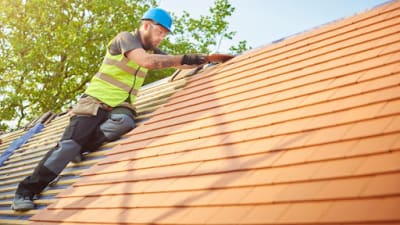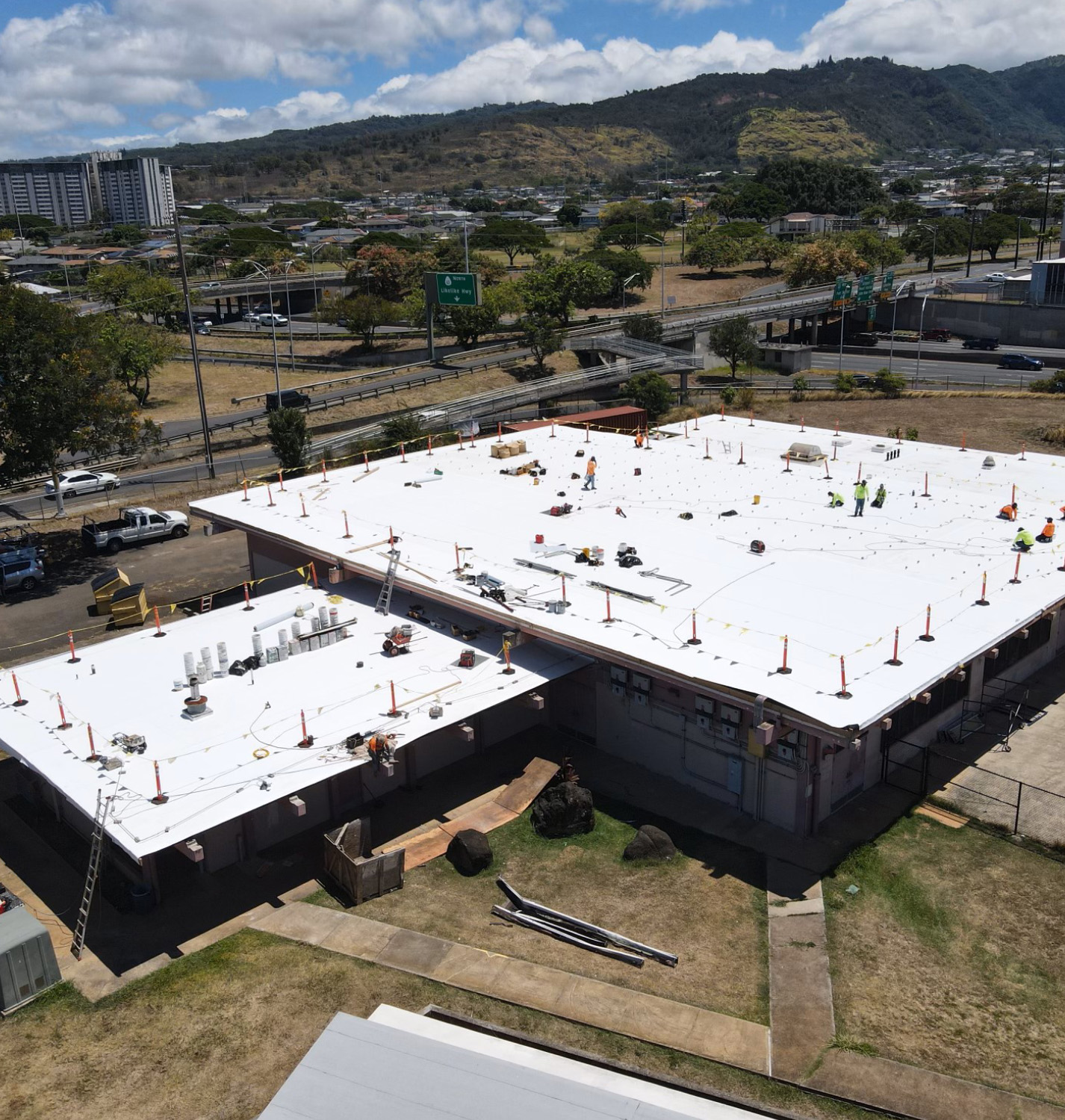Choosing insured roofing contractors oahu ensures your roof meets Hawaiian climate standards.
Choosing insured roofing contractors oahu ensures your roof meets Hawaiian climate standards.
Blog Article
Uncover Usual Roof Issues and How to Address Them Successfully
When it comes to your roofing, finding issues early can conserve you time and cash. What specific steps should you take to assure your roofing remains in leading condition?
Determining Roof Covering Leaks and Their Causes

Following, analyze your roofing from the outside. Seek missing out on or split floor tiles, rusted blinking, or damaged seamless gutters. Take notice of areas around smokeshafts, vents, and skylights, as these prevail leakage resources. If you spot any one of these problems, it's essential to address them without delay.
Throughout hefty rain, observe your roof for any merging water or drips. This can expose leaks that might not be noticeable throughout dry conditions. By remaining watchful and routinely checking your roofing, you can capture leakages early and protect your home from more damage.
Handling Missing or Harmed Tiles
When you notice missing out on or damaged tiles, it's vital to act rapidly to prevent additional problems. You'll intend to identify the extent of the damages, repair any type of missing out on tiles, and consider preventive upkeep tips to maintain your roof in leading form. Taking these steps can conserve you money and time later on.
Recognizing Tile Damages
Although shingles are developed to withstand the elements, they can still endure damage over time, leading to prospective leaks and pricey repair work. To identify shingle damages, beginning by evaluating your roofing for missing out on, cracked, or curled shingles. Regularly checking your roofing, particularly after severe weather, can help you catch concerns early and maintain the stability of your home.
Fixing Missing Out On Tiles
After finding shingle damage, the next action is addressing any type of missing out on or harmed roof shingles without delay to stop more issues. Start by examining the afflicted location and establishing the amount of tiles need replacement. If you can, climb onto your roofing system securely, wearing ideal gear. Get rid of any damaged shingles carefully utilizing a pry bar. As soon as you've removed the area, slide in the new roof shingles, ensuring they align with the existing ones. Protect them with roofing nails and apply roofing adhesive for included stability. Don't forget to seal the sides to protect against water infiltration. If you're awkward with the repair service, it's smart to call a professional. Taking action swiftly will help preserve your roofing's stability and extend its life-span.
Preventive Maintenance Tips
Exactly how can you maintain your roofing system in leading form and avoid tiles from going missing or getting harmed? Inspect your roofing system at least twice a year and after serious weather condition (roofing honolulu hi).
Keep rain gutters tidy and without particles to ensure correct water circulation and stop tile damages. Trim looming branches to minimize the threat of them scraping versus your roofing system during tornados.
Consider using a safety sealant to extend your shingles' lifespan. If you discover any problems, resolve them quickly to stay clear of costly fixings later on. Taking these safety nets can save you money and time while ensuring your roofing remains sturdy and trusted.
Recognizing Roof Covering Ventilation Issues
Appropriate roofing air flow is necessary for maintaining the longevity and effectiveness of your roof, as it helps manage temperature level and dampness levels in your attic. Without sufficient ventilation, you may face issues like excessive heat build-up, leading to early shingle degeneration, or boosted humidity that can cause mold growth and timber rot.
To assess your roofing air flow, look for indications of overheating, such as warped roof shingles or a hot attic room. Try to find obstructed vents, which can limit air flow and trap heat. You should guarantee your consumption and exhaust vents are balanced, enabling correct air exchange.
Dealing with these issues promptly can safeguard your roofing system and save you from pricey repair services down the line. Remain proactive in keeping your roofing system's ventilation to secure your home.
Addressing Roof Covering Moss and Algae Development
While you could value the all-natural appearance of moss and algae on your roofing, these microorganisms can lead to considerable problems if left unchecked. Utilize a soft-bristle brush to carefully scrub away the moss and algae, being careful not to damage your shingles.
Next, consider applying a specialized roofing cleaner or a mixture of water and bleach to eliminate staying spores. Wash thoroughly to avoid any chemical damages. In addition, mount zinc or copper strips along the ridge of your roof covering. As rain cleans over these metals, it develops a safety barrier against future development. Regular assessments and upkeep will certainly help prevent moss and algae from returning, guaranteeing your roofing system continues to be healthy for years to find.
Repairing Storm Damages and Wind Problems
After a storm, it's vital to assess your roof for damage brought on by high winds and hefty rain. Begin by inspecting for missing out on or broken tiles, as these are her latest blog usual casualties. If you see any, it's essential to change them without delay to prevent leaks. Next off, check the blinking around chimneys and vents; damaged blinking can result in water penetration.
Try to find any drooping locations, which might suggest water build-up or structural concerns. If you locate any kind of debris, like branches or leaves, remove them very carefully to prevent more damage. If your gutters are blocked, clear them to guarantee proper water drainage.

For tiny repair work, you may handle it on your own, but do not wait to call an expert for substantial damage. Remember, acting swiftly can conserve you from bigger issues down the line, so take that evaluation seriously and address any kind of problems asap.
Acknowledging Indications of Structural Damages
Exactly how can you tell if your roof covering is suffering from architectural damage? Start by searching for visible sagging or dips in your roofline. These signs indicate that the underlying framework might be compromised. Next, check for fractures or spaces in the wall surfaces or ceiling, as these can indicate moving or working out due to roof problems. Focus on leakages or water spots, especially in areas where the roofing satisfies walls. If you notice missing or damaged roof shingles, it's vital to resolve them promptly, as they can subject your roofing to more damages. Also, inspect your attic room for any indications of daylight looking with, which might indicate your roof covering's integrity goes to danger. Ultimately, listen for unusual creaking or standing out sounds, as they may indicate structural tension. If you notice any of these signs, it's time to get in touch with a roof covering specialist for a thorough assessment.
Regular Maintenance Tips for Long Life

Normal Evaluations Significance
Considering that a roof covering is your home's initial line of protection against the components, regular evaluations are essential for maintaining its honesty (roofers oahu). You need to inspect your roofing system at the very least twice a year, ideally in spring and fall, to capture possible issues early. Search for missing out on or harmed tiles, indicators of leakages, and any kind of debris that could cause troubles. Pay attention to locations around smokeshafts, vents, and flashing, as these are usual weak areas. If you observe anything uncommon, don't hesitate to contact a professional for a thorough analysis. Staying on par with these examinations can prevent pricey repair services down the line and extend your roof's life-span, guaranteeing your home stays protected for years to find.
Appropriate Seamless Gutter Upkeep
Normal roof covering assessments normally bring about the relevance of proper gutter upkeep. Tidy your gutters a minimum of twice a year to stop obstructions from leaves, dirt, and debris. If you live in a tree-heavy location, take into consideration click to investigate inspecting them regularly. Utilize a strong ladder and put on handwear covers while removing the accumulation. Likewise, check your rain gutters for leakages or rust; they can create water damages to your roofing and home. See to it downspouts direct water far from your structure to prevent flooding. Installing gutter guards can decrease particles build-up and lower maintenance time. Check for proper slope; seamless gutters must incline towards the downspouts to guarantee suitable drain. By adhering to these tips, you'll extend your rain gutters' life expectancy and protect your roofing.
Frequently Asked Inquiries
Exactly How Can I Select the Right Roof Covering Product for My Home?
To choose the appropriate roof covering product for your home, take into consideration environment, durability, and visual appeals. Research study choices like asphalt shingles, steel, or ceramic tile. Think of upkeep needs and budget to locate what suits you best.
What Are the Indicators I Need a Roofing Replacement Instead of Fixing?
If you notice widespread leaks, sagging, or missing out on shingles, you could require a roof substitute. If your roof covering's nearing its life-span or has substantial damage, it's time to consider a full substitute rather of just repair work.
Exactly how Frequently Should I Arrange Specialist Roof Covering Assessments?
You need to arrange specialist roof assessments at the very least as soon as a year, ideally in springtime or fall. This helps capture prospective concerns early, ensuring your roof stays in great condition and prolonging its life expectancy.
Can I Mount a New Roofing System Over My Old One?
You can set up a brand-new roofing system over your old one, but it's vital to examine neighborhood building ordinance and assure the existing roof covering's condition is this link audio. This method can conserve time and cash, yet take into consideration potential problems.
What Is the Average Lifespan of Different Roof Covering Materials?
The standard life expectancy differs by material: asphalt shingles last 15-30 years, metal roof coverings can last 40-70 years, while floor tile or slate roofs may surpass 50 years. Choose sensibly based on your climate and budget.
Conclusion
By remaining vigilant and attending to typical roofing problems promptly, you can secure your home and expand your roof's lifespan. With a little regular upkeep, you'll not only secure your investment yet likewise delight in peace of mind recognizing your roof covering is in top shape.
Report this page